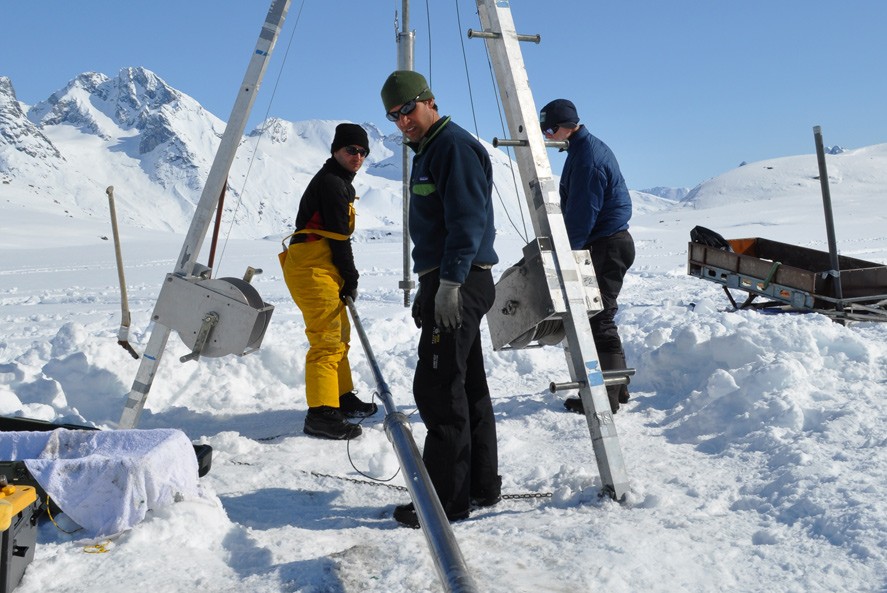The four new Fellows are a diverse group of junior and mid-career scientists with research interests spanning a range of climate topics and regions.

The Center for Climate and Life today announced the selection of four Climate and Life Fellows, who will conduct urgent, impactful research relevant to the Center’s mission. The Fellows program frees scientists to think deeply and creatively about how they can contribute knowledge for the public good, and accelerates the knowledge needed to understand how changes in climate and life systems impact the essentials of human sustainability.
Fellows are selected competitively and receive funding at the level of one-third their annual salary for up to three years, with additional funding for research travel and fieldwork.
The 2017 Fellows are a diverse group of junior and mid-career scientists with research interests spanning a range of climate topics and regions:
Laia Andreu-Hayles, a dendrochronologist at Lamont-Doherty Earth Observatory, will investigate how global change impacts forests and climate in the tropical Andes during the past, present, and into the future. Andreu-Hayles will collect tree-ring samples in Bolivia and Peru and use a model to simulate forest productivity under distinct scenarios, such as increased temperatures or atmospheric carbon dioxide concentrations. These newly developed tree-ring records will fill the large gap of terrestrial paleo data in tropical South America and provide records of past temperature and precipitation variability. This project will lead to transformative changes in understanding tropical terrestrial ecosystems, with significant advances in the fields of global environmental change, paleoclimate, ecology, and applied water management policies.
William D’Andrea, a climate scientist at Lamont-Doherty Earth Observatory, seeks to bring new analytical tools to bear on the controversies and mysteries surrounding the decline of the early settlers of Easter Island, who rapidly overexploited the island’s resources through deforestation, causing their own demise. By collecting new sediment cores, with near-continuous sediment accumulation during the past 3700 years, and by applying novel analytical tools, D’Andrea seeks to determine when the first people settled Easter Island; what the timing and amplitude of hydroclimate variability was prior to and following settlement of the island; and how long after settlement the Easter Islanders began their practice of burning forests to create arable land for agricultural activity. The work will improve understanding of the interactions that took place between the people of Easter Island, their environment, and the climate of the eastern Pacific.
Chia-Ying Lee, an atmospheric scientist at the International Research Institute for Climate and Society, will addresses how wind field asymmetries and variability impact tropical cyclone risk and how asymmetries can be included in risk models. Lee will characterize wind field asymmetries using the best-available observational data as well as output from a high-resolution numerical model. This research has implications for coastal flooding: Wind drives storm surge, economic losses, recovery costs, and even planning for climate adaptation, because wind is a critical parameter for these estimates. The work will advance knowledge of the role played by wind asymmetries and a wind-asymmetry model that will benefit the larger scientific community.
Pratigya Polissar, a geochemist at Lamont-Doherty Earth Observatory, will map vegetation history using molecular fossils to examine how climate shapes Earth’s ecosystems. Polissar plans to compare recent vegetation histories with existing records of climate to illuminate the contributing factors to particular vegetation transitions. He will focus on the revolution in terrestrial ecosystems that occurred during the past 25 Ma, when ancient and long-lived forests in North America, Africa, Asia, and Australia were replaced by the iconic modern grasslands of these regions. The likely culprits for these defining events were a combination of changing temperature, atmospheric CO2 levels, and the distribution of rainfall—all parameters being altered today due to greenhouse warming. Findings from the geologic past can therefore help map out how ecosystems and human food supplies may be affected in the near future.
The Center for Climate and Life supports scientists involved in research aimed at understanding how climate change impacts the security of food, water, and shelter, and to explore sustainable energy solutions. The Center partners with industry, finance and governments, creating and transferring the knowledge needed to build a more resilient, sustainable world.
